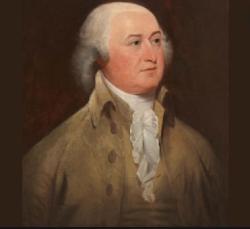About the State Land Board
In 1876, the Colorado Constitution created the Colorado State Board of Land Commissioners (State Land Board), which manages lands that the Federal Government granted to Colorado in public trust.
We are the second-largest landowner in Colorado, with 2.8 million surface acres and 4.0 million mineral estate acres. A dual mission guides our management of these assets: to produce reasonable and consistent income over time, and to provide sound stewardship of the state trust assets. Our lands are held in eight public land trusts, which benefit public schools and public institutions. The Colorado State Land Board owns, stewards, and leases this land and mineral estate in order to earn money for Colorado public schools. We are guided by our 2026 Strategic Plan's four bold goals. Read the plan.
State Land Board revenue entirely funds its operations, we receive $0 tax dollars.
$2+ billion for Colorado public schools
The majority of revenue is distributed to the Colorado Department of Education's Building Excellent Schools Today (BEST) program. Land Board revenue also supports the Colorado Department of Education's annual operating budget via the School Finance Act.
Watch our 90-second video about how trust land leases earn money for schools:
Established in 2008, BEST provides an annual amount of funding in the form of competitive grants to school districts. BEST funds can be used for the construction of new schools as well as general construction and renovation of existing school facility systems and structures.
We are proud to be the primary funding source for BEST. BEST has:
- Awarded 354 grants in 141 school districts.
- Funded $2.1 billion in projects from $4.6 billion in requests.
- Improved health, safety, and security in 524 schools.
- Improved the learning environment for nearly 225,000 students.
- Created and supported roughly 37,000 jobs (reported in December 2018 by the Colorado Department of Local Affairs).
Learn more about the School Finance Act
Contact us
There are several ways to connect with the State Land Board.
- Contact our team members directly.
- Read our monthly board agendas.
- Submit a CORA request.
- Join us at our monthly, public board meetings. Our summer meetings occur in locations across the state to make it easier for rural Colorado to attend.
- Provide public comment to the Commissioners. Please note that all public comments are subject to the Colorado Open Records Act. The public comment form will close two days before the meeting at 12 PM MST.
- If you can't attend our meetings in person, join our YouTube channel to view the recordings. Recordings are typically posted within one week of the meeting.
Work with us
For more than 140 years, we have leased trust land in order to earn money for school kids. Lessees must comply with our strict land stewardship guidelines.
- Agriculture
- Commercial real estate
- Ecosystem services
- Mining
- Oil and gas
- Recreation
- Renewable energy
- Rights-of-way
- Tower sites
- Water
- And more!
Our history
The Lincoln Institute of Land Policy provides resources about the history of trust land in America. Excerpted from the Lincoln Institute:
"State trust lands are a phenomenon that dates back to the Northwest Ordinance of 1785. With this ordinance, the U.S. Congress established a policy of granting land to states when they entered the Union as an asset to generate funding to support the public education system, a fundamental state responsibility. Starting with Ohio in 1785 and ending with Arizona and New Mexico in 1910, each new state received a set of federal lands that, under federal enabling legislation and the corresponding state constitution, were to be held in trust for the benefit of the public schools. The trust mandates established by the U.S. Congress and the states are clear: to generate revenue to support the public schools and other institutions. In some cases there are other minor institutional beneficiaries as well, but the public schools (K–12) are by far the largest beneficiary throughout the state trust land system. That singularity of purpose continues today and distinguishes state trust lands and the state programs that administer them from other types of public lands."
Former President John Adams is credited with originating the concept of using trust land to provide funding/resources for public schools in America.
"The Whole People must take upon [themselvs] the Education of the Whole People and must be willing to bear the [expences] of it. There should not be a district of one Mile Square without a school in it, not founded by a Charitable individual but maintained at the [expence] of the People [themselvs] they must be taught to reverence [themselvs] instead of [adoreing] their servants their Generals Admirals Bishops and Statesmen.” - John Adams in a letter he sent to British reformer John Jebb
Accommodation Statement
The State of Colorado is committed to providing equitable access to our services to all Coloradans. Please contact Rachel Majich (rachel.majich@state.co.us or 720-854-3306) for personalized accessibility assistance using this page, which includes links to visual geographic representation of our data. The data is available in a text format upon request. We will contact you directly within three business days. Visit our accessibility webpage for more information and services, including AIRA, our free service for blind and low-vision users.
